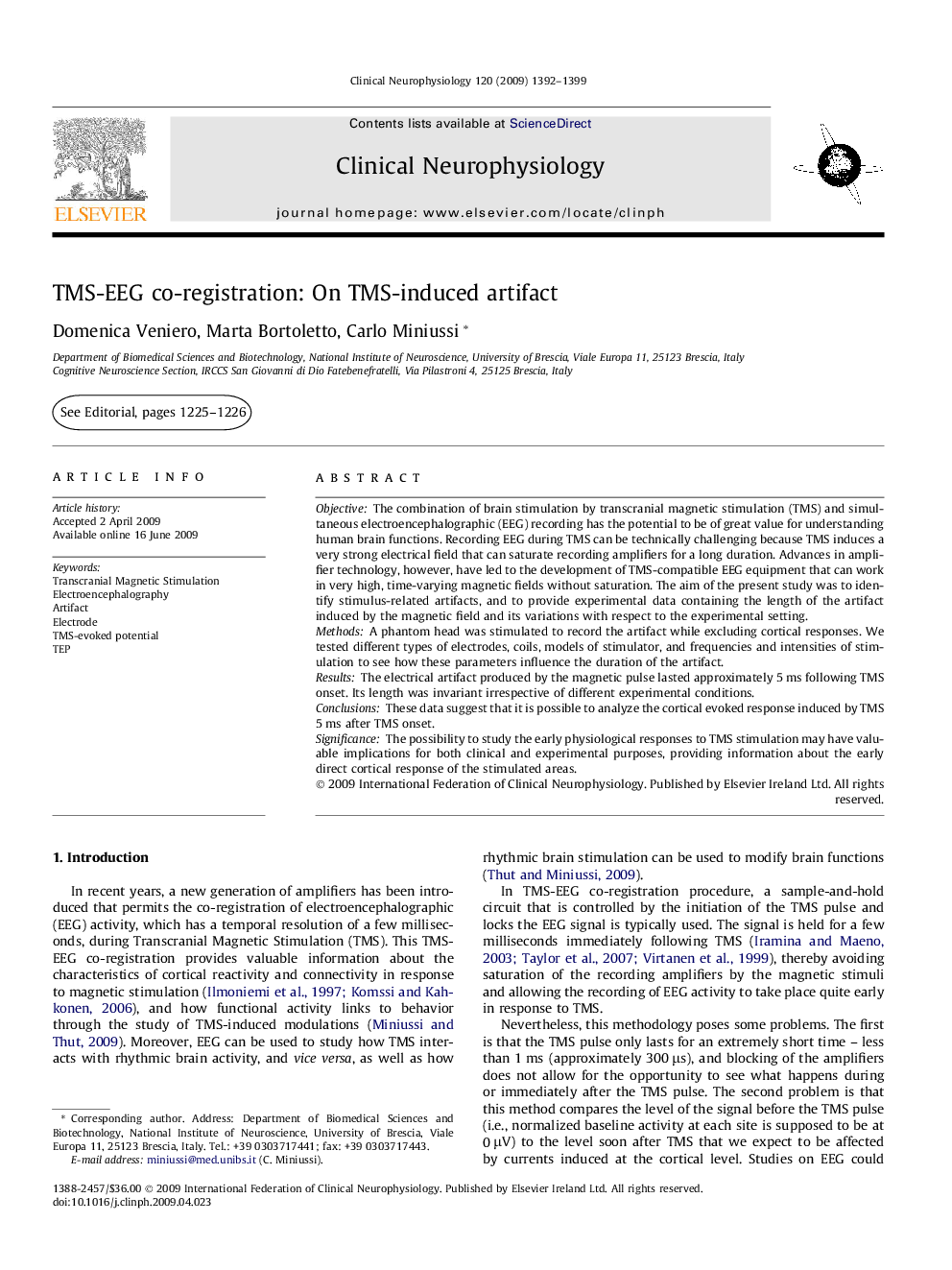| Article ID | Journal | Published Year | Pages | File Type |
|---|---|---|---|---|
| 3046574 | Clinical Neurophysiology | 2009 | 8 Pages |
ObjectiveThe combination of brain stimulation by transcranial magnetic stimulation (TMS) and simultaneous electroencephalographic (EEG) recording has the potential to be of great value for understanding human brain functions. Recording EEG during TMS can be technically challenging because TMS induces a very strong electrical field that can saturate recording amplifiers for a long duration. Advances in amplifier technology, however, have led to the development of TMS-compatible EEG equipment that can work in very high, time-varying magnetic fields without saturation. The aim of the present study was to identify stimulus-related artifacts, and to provide experimental data containing the length of the artifact induced by the magnetic field and its variations with respect to the experimental setting.MethodsA phantom head was stimulated to record the artifact while excluding cortical responses. We tested different types of electrodes, coils, models of stimulator, and frequencies and intensities of stimulation to see how these parameters influence the duration of the artifact.ResultsThe electrical artifact produced by the magnetic pulse lasted approximately 5 ms following TMS onset. Its length was invariant irrespective of different experimental conditions.ConclusionsThese data suggest that it is possible to analyze the cortical evoked response induced by TMS 5 ms after TMS onset.SignificanceThe possibility to study the early physiological responses to TMS stimulation may have valuable implications for both clinical and experimental purposes, providing information about the early direct cortical response of the stimulated areas.
